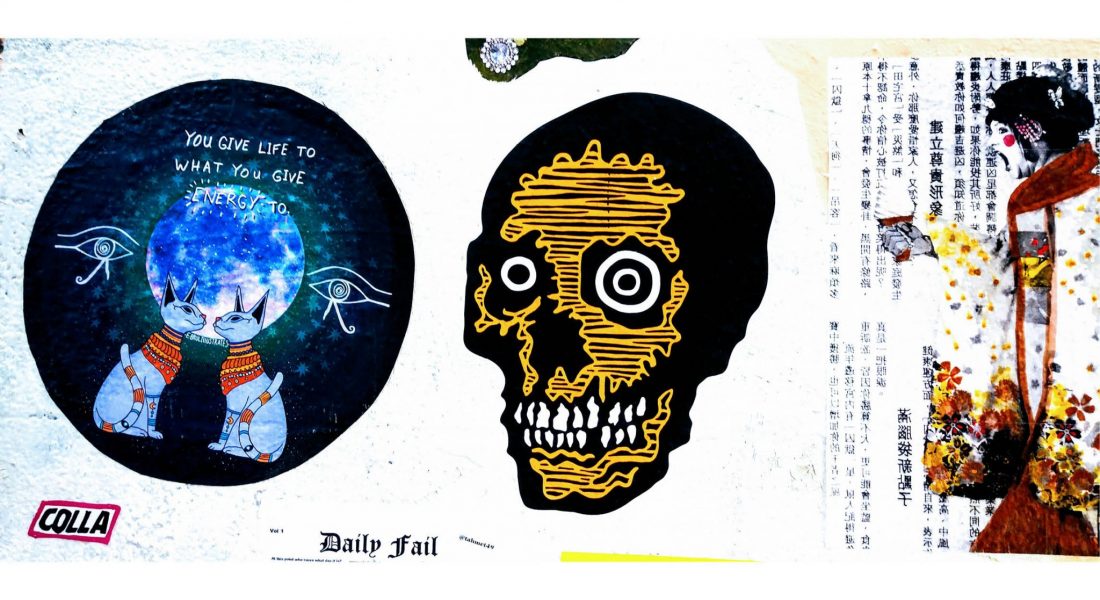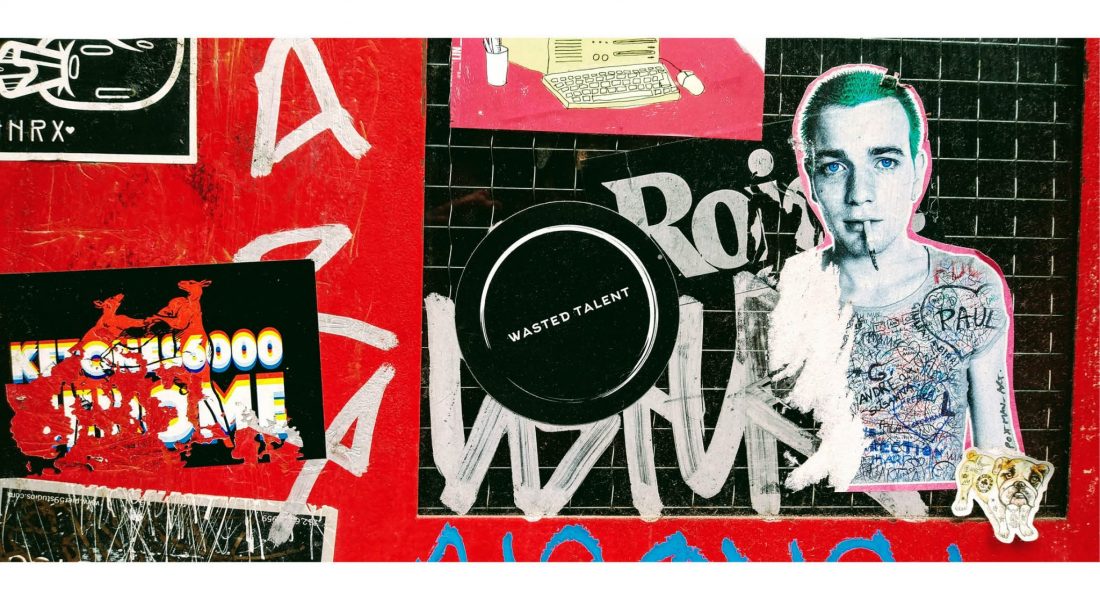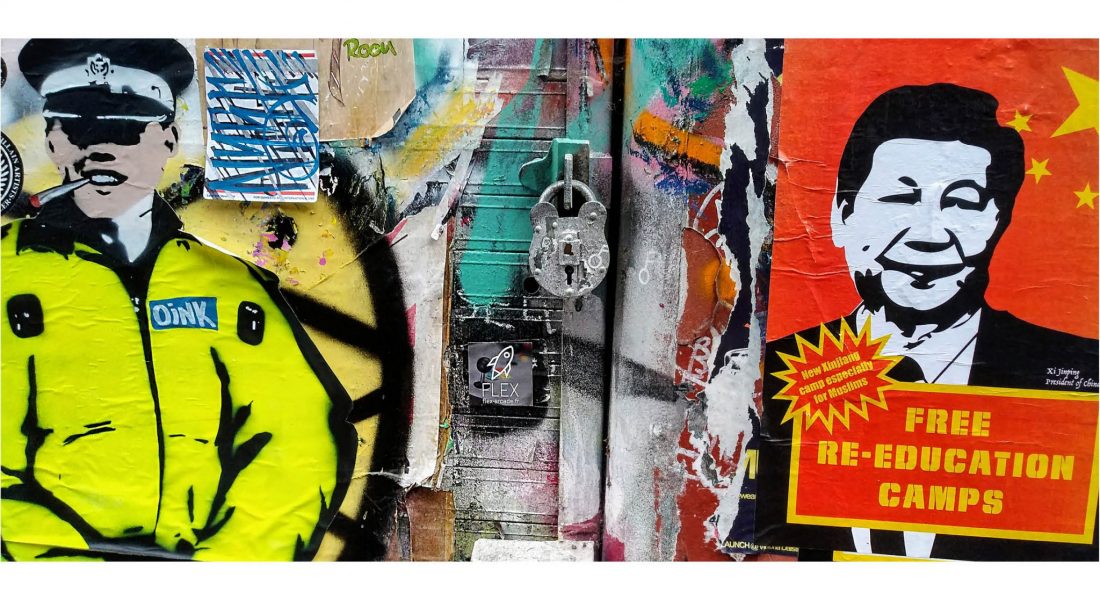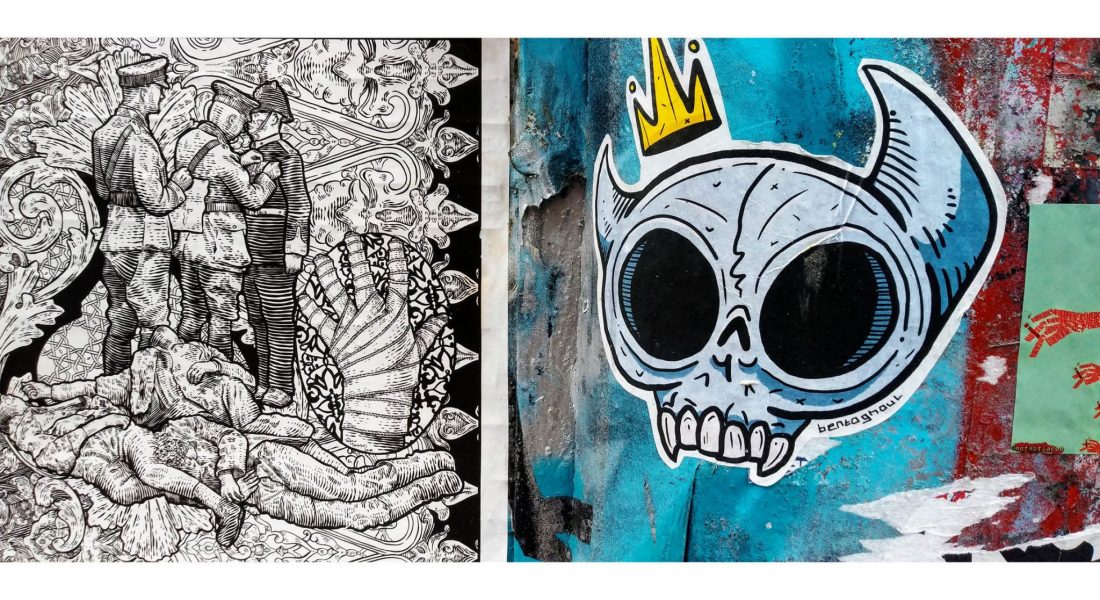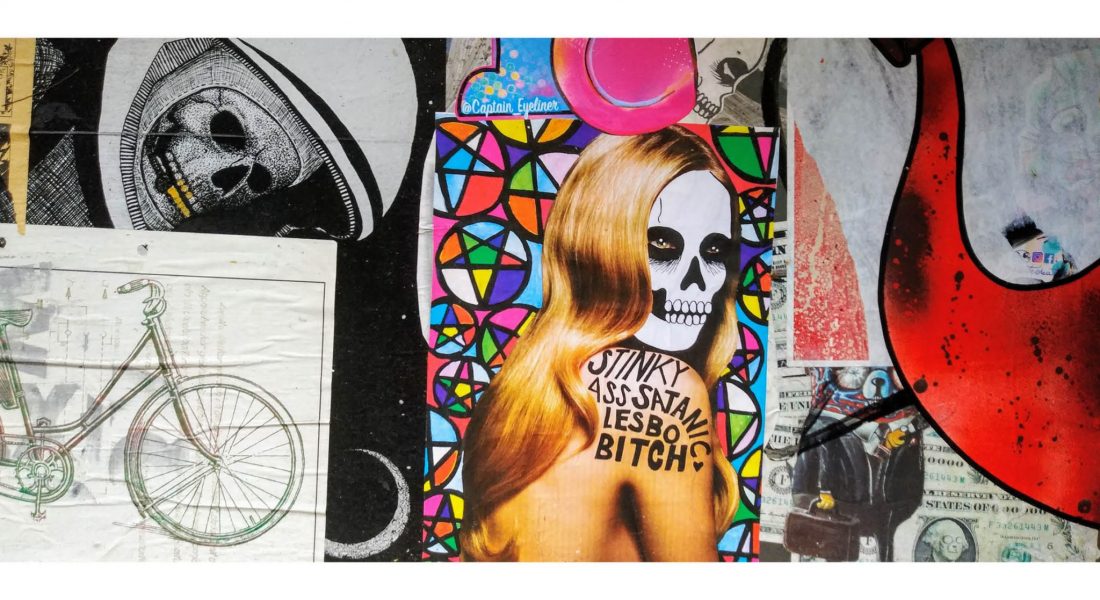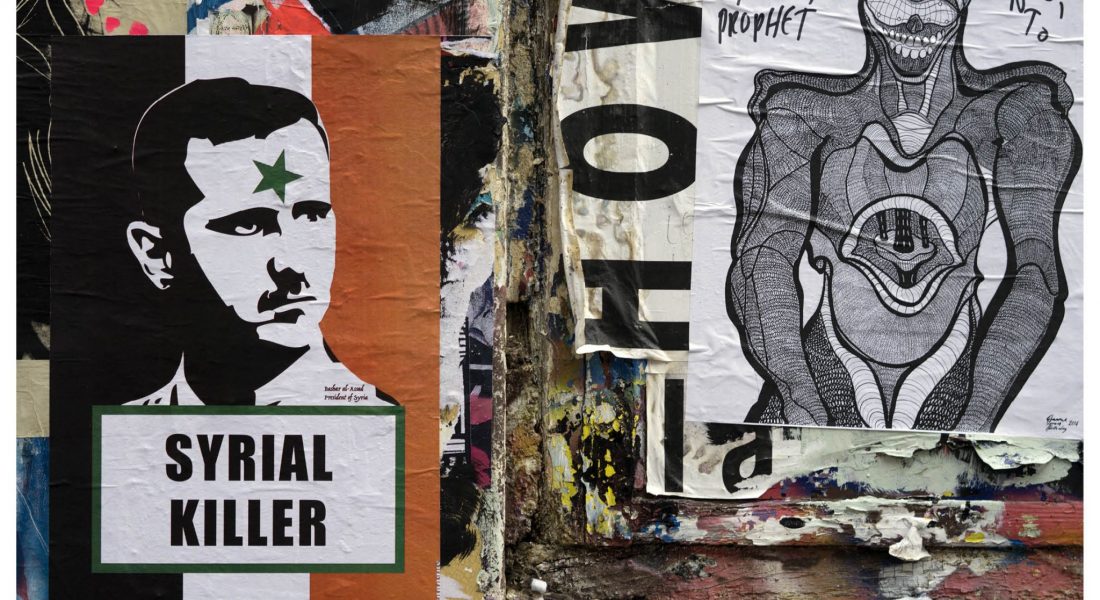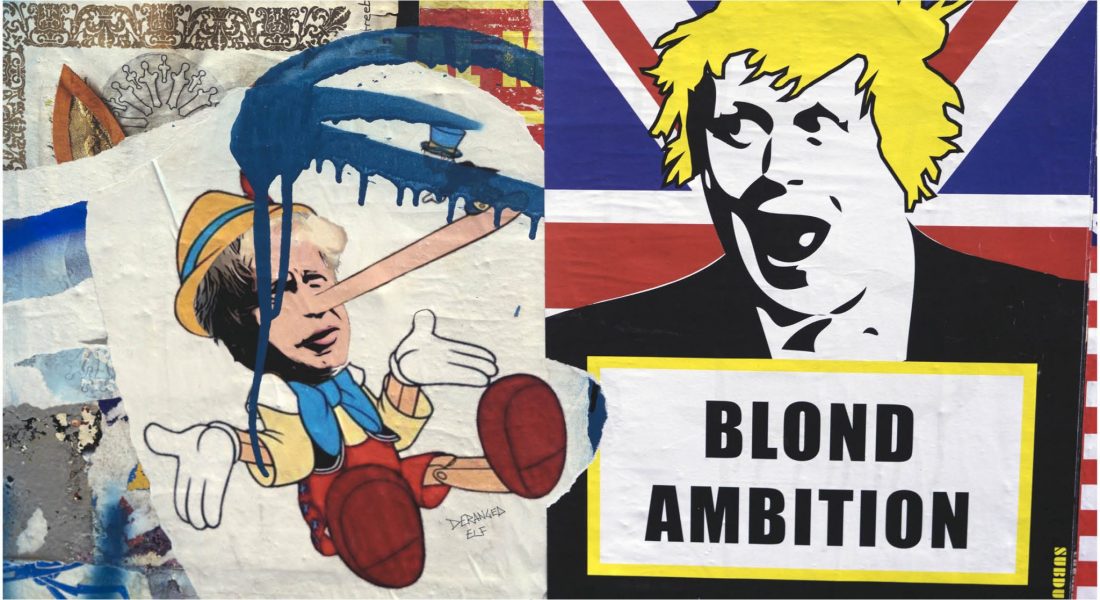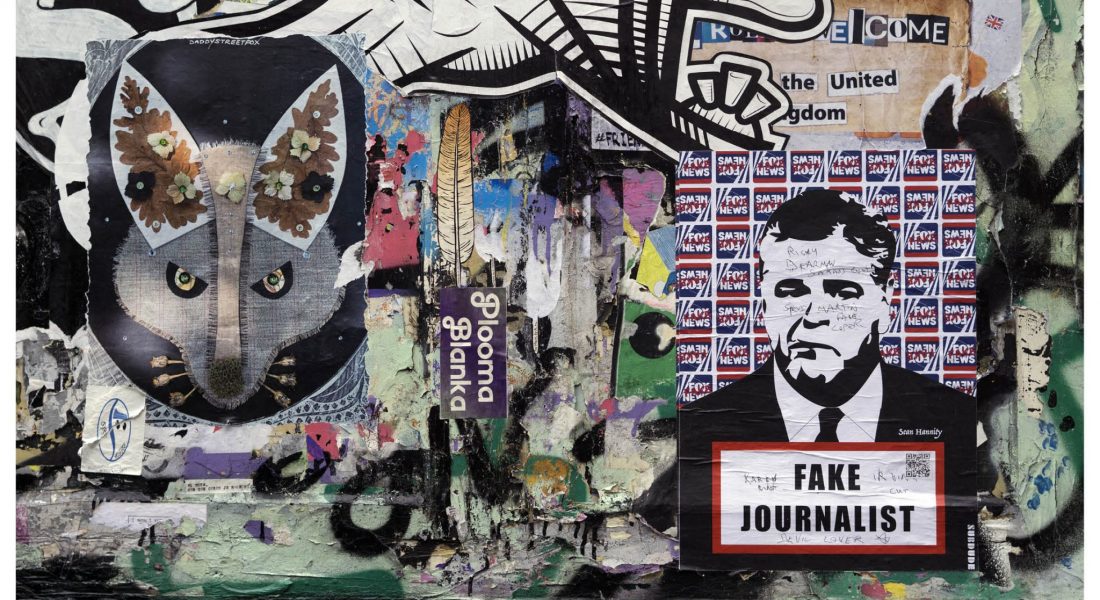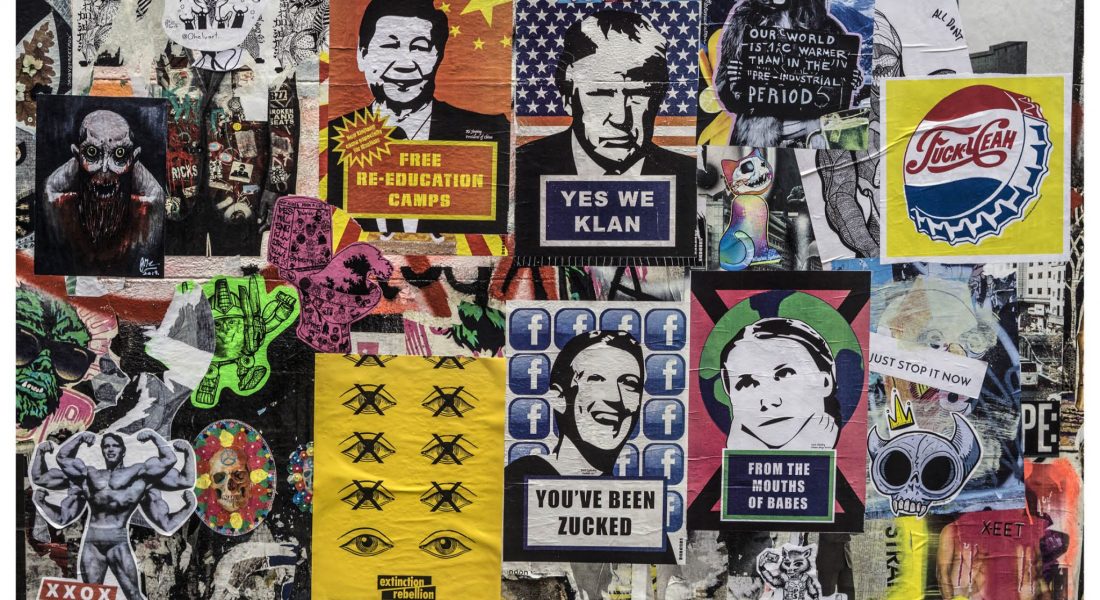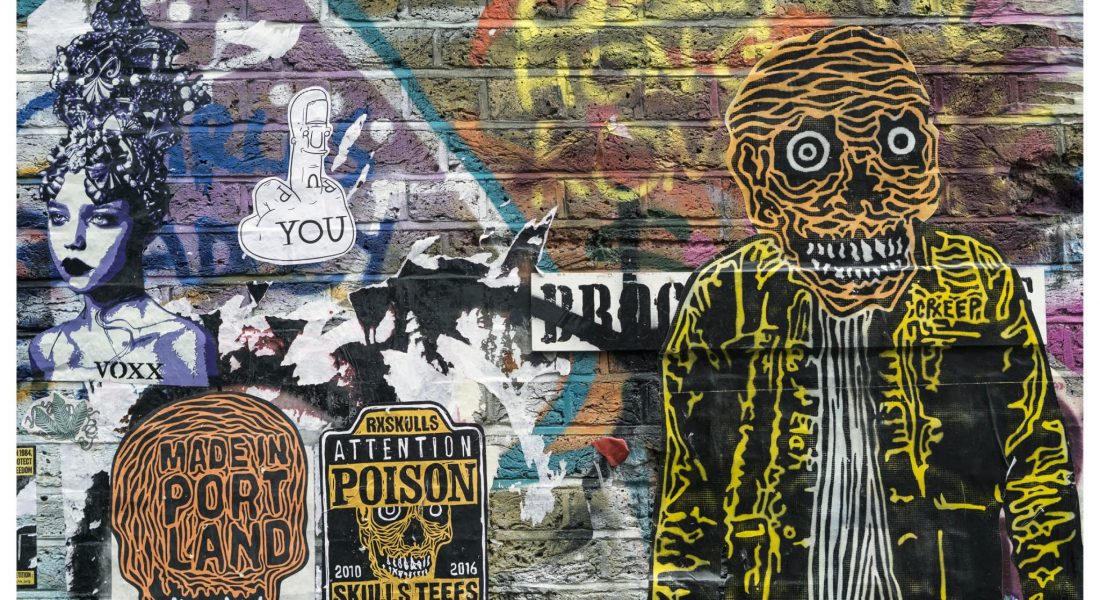MURO urbano ―Brick Lane, London, Septiembre 2019―, lugar común de encuentro de la comunidad. Intervención e intercambio comunicativo en el espacio público.
Muro como “altar”, “quiosco” y “monumento” filosófico, político, social y económico (Hirschhorn) que denuncia los efectos, males, del capitalismo neoliberal. Visibilidad ―eje de la práctica política― de la lista de acontecimientos destacados o las piezas del juego-sanción social.
El MURO deconstruye la autoridad de los medios, denuncia situaciones de poder. Distanciado del esteticismo refinado, libera actividad e irradia, más que calidad, la fuerza de las pasiones populares ―las “energías revolucionarias”(*), verdes, rojas, moradas…, en el MURO atrapadas―.
MURAL:
Arte público―todo hombre es un artista(†)―, popular ―no low-pop―.
Arte crítico(‡) del mundo moderno, del folclore de su filosofía (Gramsci) ―verdad que debe ser desarrollada: ramificación, distribución de ideas, alegorías, impulso archivista del “impulso alegórico”(§)―, fijado en el MURO, referente de microsociedad de un estado fallido.
Arte activista ―sintetizador y catalizador―, más allá de la naturaleza intrínseca del arte, ajeno al mercado del arte.
Mi ojo-cámara, paranoico, en su deseo de recuperar la visión fallida de la vida, nuevo lugar de una utopía, localiza, registra y re-imagina, manipulando con el encuadre, desde una distancia incorrecta, lo estéticamente rentable del mural. Détournement (desvío, malversación, desfalco, rapto) cultural: ejercicio o práctica activista en una tentativa de trocear no documentos sino argumentos, el espacio del significado.
Mi ojo-cámara conecta ―trueque marginal, intercambio incidental― lo que no se conecta: collages, ideas superpuestas organizadas por el azar.
Escapado el fragmento al control de quien lo hizo, establecidas nuevas conexiones por interpretación asociativa y descomposición entrópica, todo se re-escenifica. Y, todo ya unido, encajado, vitalizado, fluye como juego libidinal en la crítica de la (retórica de la) representación:
¿Dónde estamos? ¿Qué queremos?
IN THE WALL – PHOTOMURAL, FRAGMENTS
Urban WALL ―Brick Lane, London, September 2019―, common meeting place of the community. Intervention and communicative exchange in the public space.
WALL like an “altar”, “kiosk” and “monument” philosophical, political, social and economic (Hirschhorn) that denounces the effects, evils, of neoliberal capitalism. Visibility ―axis of political practice― from the list of outstanding events or the pieces of the social sanction-game.
The WALL deconstructs the authority of the media, denounces situations of power. Away from refined aestheticism, it releases activity and radiates, rather than quality, the force of popular passions ―the “revolutionary energies”(*), green, red, purple …, trapped in the WALL―.
MURAL:
Public art ―every man is an artist(†)―, popular ―not low-pop―.
Critical art(‡) of the modern world, of the folklore of his philosophy (Gramsci) ―a truth that must be developed: ramification, distribution of ideas, allegories, archivist impulse of the “allegorical impulse”(§)―, set in the WALL, a reference to the micro-society of a failed state.
Activist art ―synthesizer and catalyst―, beyond the intrinsic nature of art, alien to the art market.
My eye-camera, paranoid, in its desire to recover the failed vision of life, new place of a utopia, locates, registers and re-imagines, manipulating with the frame, from an incorrect distance, the aesthetically profitable of the MURAL. Cultural détournement (diversion, embezzlement, defalcation, abduction): exercise or activist practice in an attempt to chop not documents but arguments, the space of meaning.
My eye-camera connects ―marginal barter, incidental exchange― that which does not connect: collages, overlapping ideas organized by chance.
Escaped the fragment to the control of the one who did it, established new connections by associative interpretation and entropic decomposition, everything is re-staged. And, all already united, embedded, vitalized, flows as a libidinal game in the critique of the (rhetoric of) representation:
Where are we? What do we want?
(*) Walter Benjamin, “Tesis de la Filosofía de la Historia” (1940). | Walter Benjamin, “Thesis of the Philosophy of History” (1940).
(†) Marcel Duchamp, Joseph Beuys, Andy Warhol dixit.
(‡) “Concienciar sobre los mecanismos de dominio para hacer del espectador un agente informado de transformación del mundo”. Jacques Rancière, Malaise dans l’esthétique (2008). | “Raise awareness about the mechanisms of dominance to make the viewer an informed agent of world transformation”. Jacques Rancière, Malaise dans l’esthétique (2008).
(§) Craig Owens, “The Allegorical Impulse: Notes towards a Theory of Postmodernism” (1980). | Craig Owens, “The Allegorical Impulse: Notes towards a Theory of Postmodernism” (1980).
Web del autor: pedro-gandia.com


